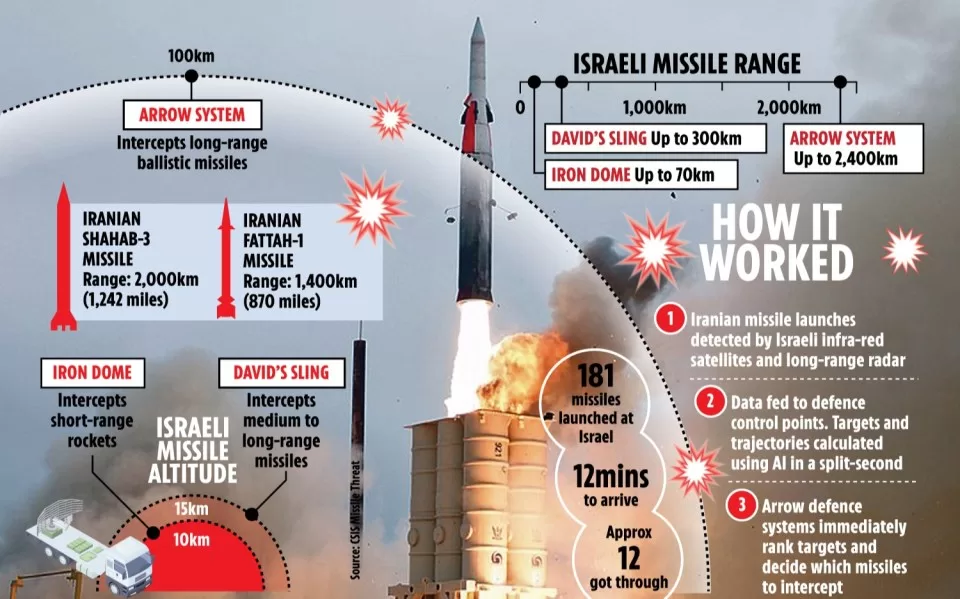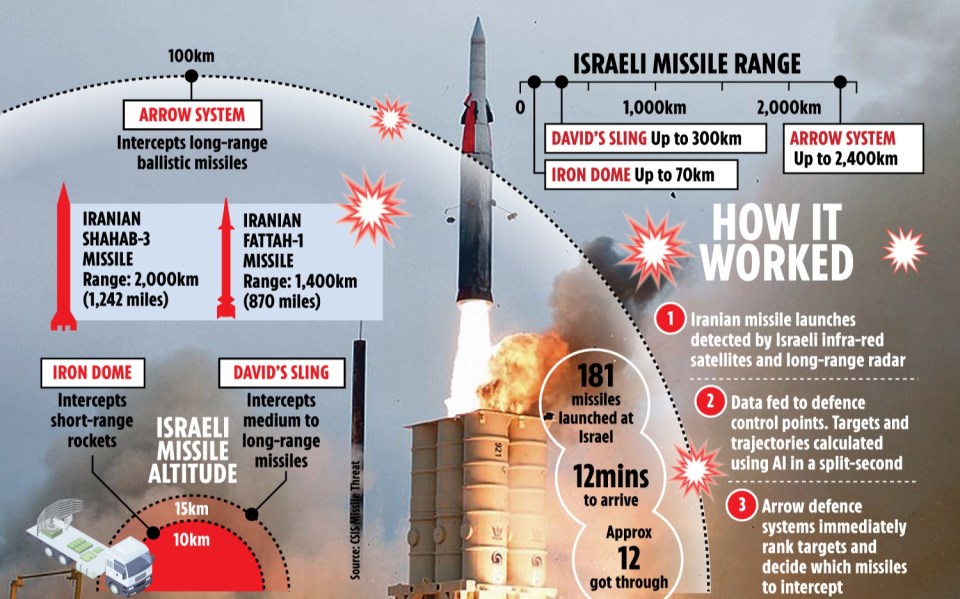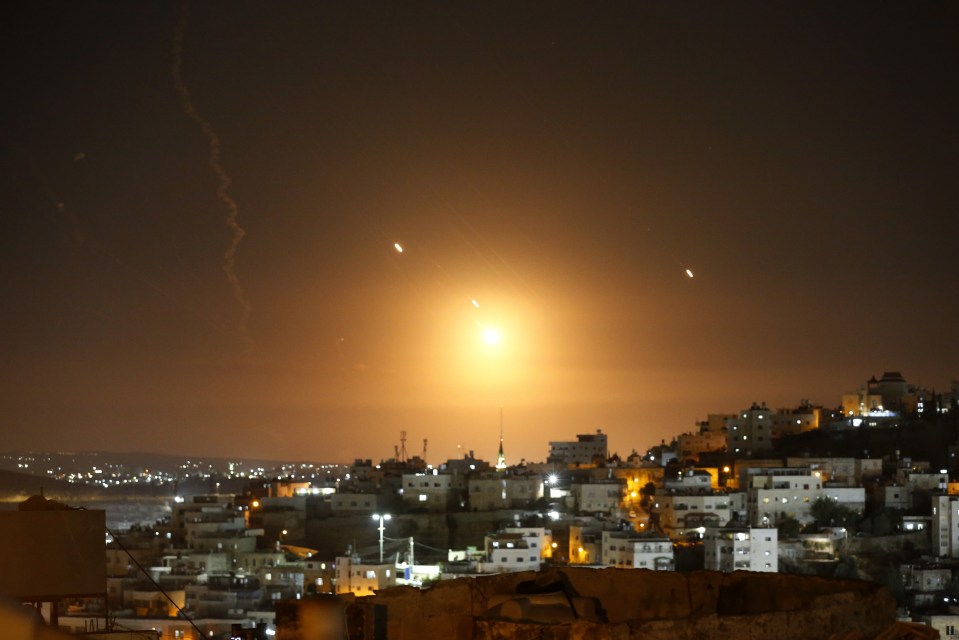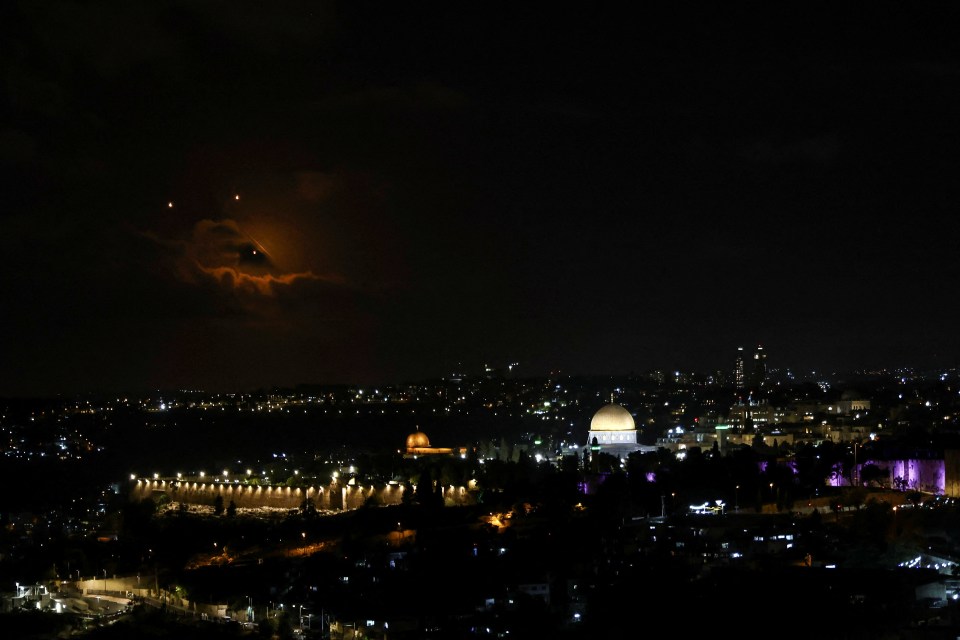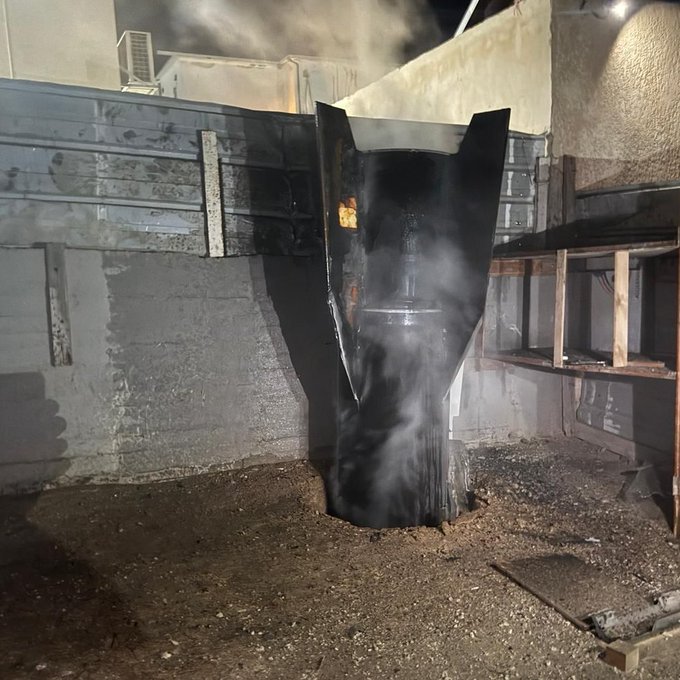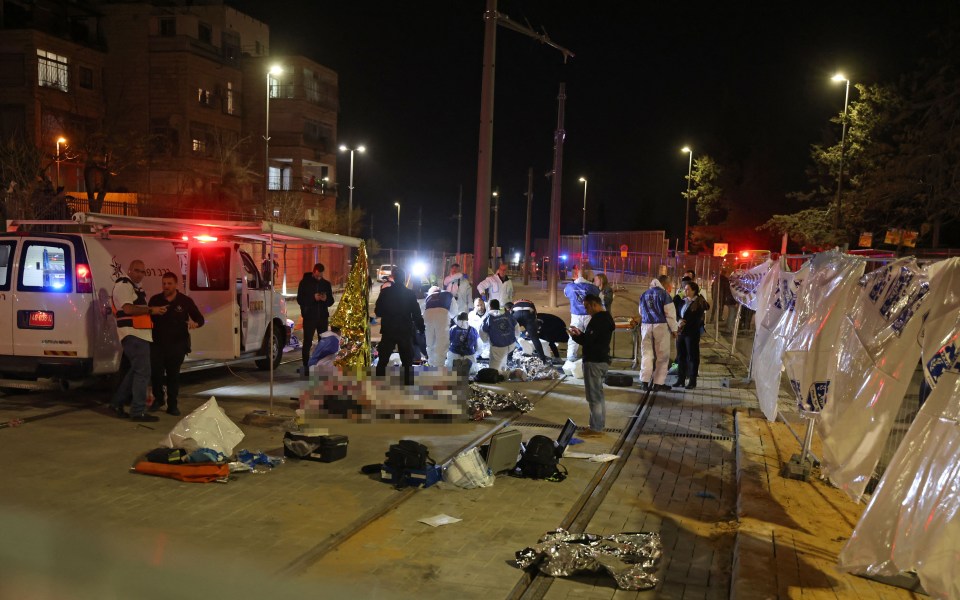BRITAIN could not have “coped” with the sort of massive missile blitz unleashed on Israel by Iran on Tuesday.
That was the verdict of Israel’s ambassador to the UK yesterday.
Her comments may seem surprising but they are also undoubtedly true.
Britain is not defended by the same world-beating layers of air defence systems as Israel.
We could not have stopped a barrage of 182 ballistic missiles that take as little as 12 minutes from the moment they are launched to the point they obliterate targets.
We don’t have an Iron Dome or David’s Sling, although they weren’t what saved Israel on Tuesday.
READ MORE ON ISRAEL CONFLICT
Nor do we have the Patriot missile batteries that Israel and Jordan both use to protect themselves from Iran.
Blast to the edge of space
The weapons that really saved Israel this week, its Arrow 2 and Arrow 3 anti-ballistic missile systems and two US Navy destroyers.
The Arrows are the crown jewels of Israel’s Aerial Defence Array, a multi-layered air defence system. They can shoot down missiles in space.
The only thing in Britain’s arsenal remotely comparable are the few dozen Sea Viper missiles onboard six Royal Navy destroyers.
That’s because Britain is not at war with its neighbours. Israel most certainly is.
Its Ambassador, Tzipi Hotovely, said: “I don’t think Britain would have coped with 182 rockets direct to London, to Manchester, to Birmingham . . .
“We saw the centre of Israel covered with rockets.”
The point she was making was Tuesday’s attack could have easily filled Israel’s morgues if its air defences hadn’t worked.
It was nothing short of miracle that only one person died when he was crushed by falling debris in the occupied West Bank.
A barrage of 182 ballistic missiles is huge.
When Iran launched a similar attack in April, it fired 120 ballistic missiles flanked by 170 slow-flying drones, around 30 low flying cruise missiles.
According to Israeli media, the drones took up to nine hours to arrive, the cruise missiles took around two hours while some of the ballistic missiles took as little as 12 minutes.
It was the first time Tehran had dared to launch a direct attack on Israel.
And it had telegraphed its intentions days in advance. That let America coordinate allies, including Britain, France and Jordan, to assist a joint shoot down mission.
Tuesday’s attack was different. Iran only fired ballistic missiles — but 50 per cent more of them — and there was hardly any warning.
Hypersonic missiles can manoeuvre at five times the speed of sound making them far harder to intercept.
Jerome Starkey
At around 4pm UK time US officials revealed they expected Iran to launch an attack within the next 12 hours.
Spy satellites may have spotted Iran’s missile forces fuelling their missiles. Or they may have intercepted orders to prepare the weapons for launch.
Just 90 minutes later Israel warned its citizens to shelter.
And minutes after that the skies over Israel erupted with explosions.
Matthew Savill, the military science director of the London-based Rusi think tank, said most of the Iranian missiles appeared to be Emad and Ghadr-1 medium-range ballistic missiles, which are variants of the Shahab-3.
They are around 16 metres long, weigh around 19 tonnes and have a range of up to 2000km.
They are designed to blast to the edge of space before re-entering the Earth’s atmosphere, breaking into smaller parts and plummeting towards their targets at many times the speed of sound.
Iran also claimed it fired much newer “hypersonic” Fattah 1 missiles.
Hypersonic missiles can manoeuvre at five times the speed of sound making them far harder to intercept.
‘Pay the price’
Iran’s Revolutionary Guard claimed the Fattah 1s were aimed Israel’s air defences. Specifically, at the Arrow-2 and Arrow-3 sites.
Whatever missiles were involved, the launches would have been detected immediately by infra red satellites and long range radar systems.
That data is fed to directly to the air defence command and control points — AI powered brains — which make split-second calculations about the missiles’ trajectories and most likely targets.
The air defence systems must also decide almost instantly which interceptors to fire at which missiles after ranking the targets in terms of priority.
Tuesday’s targets appeared to include the headquarters of Israel’s Mossad spy service in Glilot, Tel Aviv, and two major airbases, Tel Nof and Nevatim.
The Institute for The Study of War said Iran tried to overwhelm the Arrow system by “saturating” it with missiles. It is unclear if it worked. The US and Israel said the attack was “ineffective”.
But, as Matthew Savill pointed out, videos captured “multiple impacts” especially at Nevatim airbase.
The question now is how Israel responds. Do they heed the advice of their allies to de-escalate?
Jerome Starkey
It is thought around a dozen missiles may have found their targets.
Savill also noted that a number of the intercepts were made at the last second, in the so-called “terminal phase”.
Of course, Israel was not alone. Britain scrambled Typhoon jets, although they turned out not to be needed. Jordan fired its Patriot batteries.
And two US Navy destroyers, the USS Bulkeley and USS Cole, unleashed a dozen interceptor missiles to take down what officials called “a handful” of missiles.
The question now is how Israel responds. Do they heed the advice of their allies to de-escalate?
As Britain’s Defence Secretary John Healey said yesterday, “our biggest concern is to avoid this conflict spiralling out of control and into a wider regional war”.
The spiral of slaughter seems destined to continue. Ambassador Hotovely vowed “action”.
She said: “Iran will pay the price . . . There will be a severe retaliation coming from Israel.”
